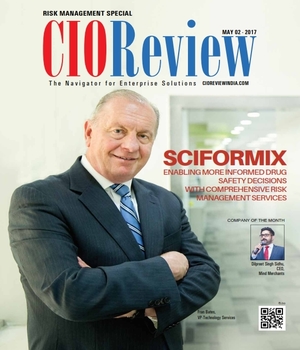
Project Management and Risk Planning
Suresh .V. Menon; IASSC Certified Six Sigma Black Belt & Member RSISInternational.org
 Executives will be facing increasingly complex challenges during the next decade. These challenges will be the result of high escalation factors for salaries and raw materials, increased union demands, pressure from stock holders, and the possibility of long term high inflation accompanied by a mild recession and a lack of borrowing power with financial institutions. These environmental conditions have existed before but not the degree that they do today. The rapid rate of change in both technology and the market place has created enormous strains on existing organizational forms. The traditional structure is highly bureaucratic; and experience has shown that it cannot respond rapidly enough to a changing environment. Thus the traditional structure must be replaced by project management, or other temporary management structures that are highly organic and can respond very rapidly as situations develop inside and outside the company.
Executives will be facing increasingly complex challenges during the next decade. These challenges will be the result of high escalation factors for salaries and raw materials, increased union demands, pressure from stock holders, and the possibility of long term high inflation accompanied by a mild recession and a lack of borrowing power with financial institutions. These environmental conditions have existed before but not the degree that they do today. The rapid rate of change in both technology and the market place has created enormous strains on existing organizational forms. The traditional structure is highly bureaucratic; and experience has shown that it cannot respond rapidly enough to a changing environment. Thus the traditional structure must be replaced by project management, or other temporary management structures that are highly organic and can respond very rapidly as situations develop inside and outside the company.
Project Management on the other hand involves five process for groups identified in the PMBOK Guide namely:
· Project Initiation
o Selection of the best project given resource limits
o Recognizing the benefits of the project
o Preparation of the documents to sanction the project
o Assigning of the project manager
· Project Planning
· Definition of the work requirements
· Definition of the quality and quantity of the work
· Definition of the resources required
· Scheduling the activities
· Evaluation of the various risks
· Project Execution
· Negotiating the project team members
· Directing and managing the work
· Working with team members to help them to improve
· Project Monitoring and control
§ Tracking progress
§ Comparing actual outcome to predicted outcome
§ Analyzing variances and impacts
§ Making adjustments
· Project Closure
§ Verifying that all the work has been accomplished
§ Contractual closure of the contract
§ Financial Closure of the charge numbers
§ Administrative closure of the work.
As per the context of the title of the paper we will discuss the risk management planning involved in a project. Risk management is the act or practice of dealing with risk. It includes planning for risk, identifying risks, developing risk response strategies and monitoring controlling risks to determine how they have changed.
Decision making falls into three categories; certainty, risk, and uncertainty. Decision making under certainty implies that we know with 100 percent accuracy what the states of the nature will be and what the expected payoffs will be for each state of the nature. Mathematically it can be shown off with payoff matrices.
Risk Management Process
· Plan risk management The process of developing and documenting an organized comprehensive, and interactive strategy and methods for identifying and analyzing risks, developing risk response plans and monitoring and controlling how risks have changed.
· Identify risks The process of examining the program areas and each critical technical process to identify and document the associated risks.
· Perform Risk analysis the process of examining each identified risk to estimate the probability and predict the impact on the project. It includes both qualitative risk analysis and quantitative risk analysis.
· Plan risk Response the process that identifies, evaluates, selects and implements one or more strategies in order to set risk at acceptable levels given program constraints and objectives. This includes the specifics on what should be done, when it should be accomplished, who is responsible, and associated cost and schedule. A risk or opportunity response strategy is composed of an option and implementation approach. Response options for risks include acceptance, avoidance, mitigation and transfer.
· Monitor and Control Risks The process that systematically tracks and evaluates the performance of risk response actions against established metrics thru-ought the acquisition process and provides inputs to updating risk response strategies, as appropriate.
CIO Viewpoint
Upcoming Technological Advancements in Payments...
By Pinak Chakraborty, CIO of Airtel Payments Bank
Shaping the Future of AI: Talent, Innovation,...
By Yann LeCun, Chief AI Scientist at Meta
Future of Smart Manufacturing: Integrating Tech...
By Mohammed Kaishulla, Chief information officer, EPACK Durable
CXO Insights
Building Resilience through Robust Operational...
By Shankar Bhaskaran, Managing Director – India, MetricStream
Project Management and Risk Planning
By Suresh .V. Menon; IASSC Certified Six Sigma Black Belt & Member RSISInternational.org
The CIO's Imperatives in IT - Enabled Productivity







